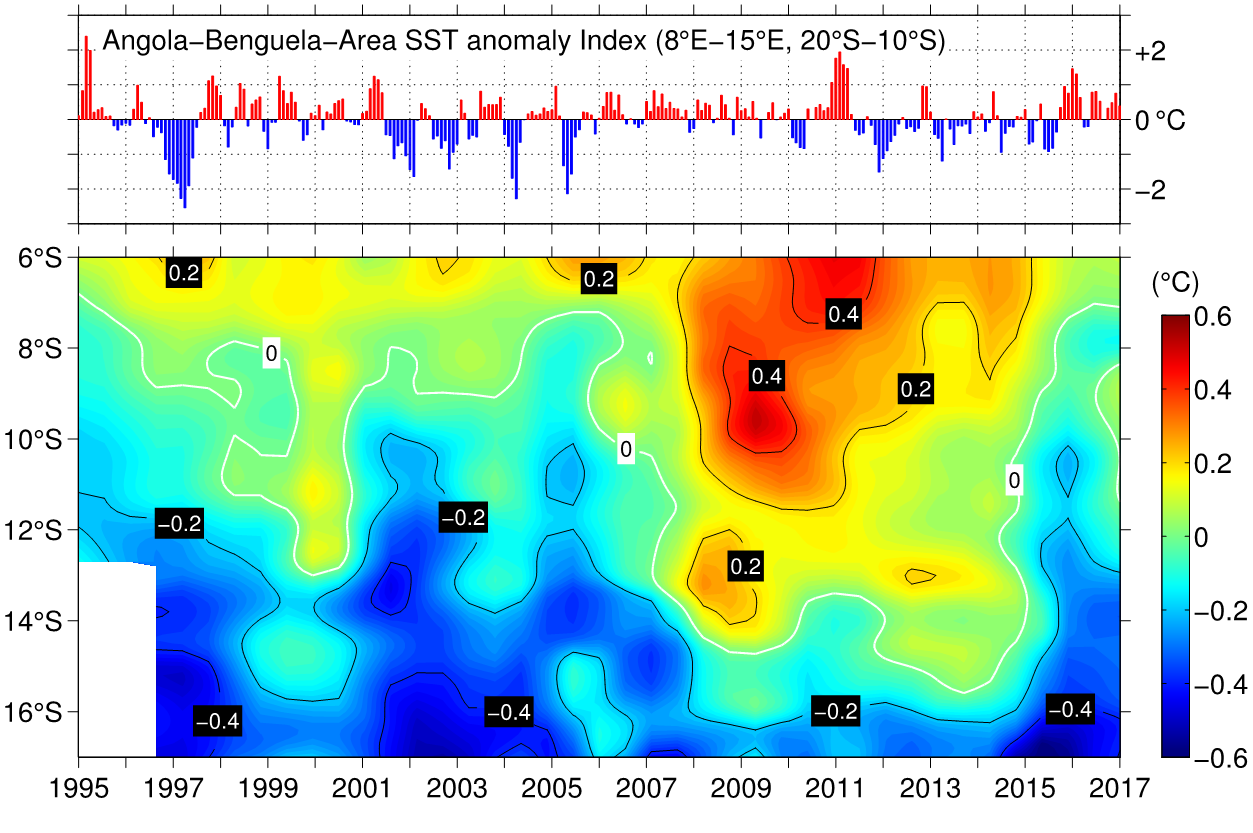Benguela Niños: Physical processes and long-term variability - BANINO
Coastal countries of Southwest Africa strongly depend upon their ocean: societal development, fisheries, and tourism, face significant changes associated with climate variability and global and climate change. The impact of climate change on eastern boundary upwelling regions is not fully understood and assumed to be complex. One expects increasing temperatures, acidification and deoxygenation. At the same time there are indications that it might also influence the seasonal cycle of upwelling and its interannual variability. Climate model studies have indeed suggested a weakened internal variability under global warming that might have a profound influence on the biological productivity and ecosystem response of the region. The main focus of the proposed study is on the processes driving coastal upwelling and high biological productivity in Southwestern Africa, including wind forcing and mixing induced by internal waves. The proposed process studies are based on joint data acquisition and model-assisted analysis. The observational results represent a solid foundation for validation of regionally enhanced ocean circulation models applied to better understand coastal upwelling and the exchange of upwelled water with the oligotrophic ocean. Climate model simulations will further address the dependence of ocean-atmosphere interactions on the mean state of the South Atlantic and will provide regional projections of the climate system in a global warming scenario. Based on the success in previous projects, the project aims at building and expanding local capacities required for the monitoring, analysis and prediction of the variability of the eastern boundary upwelling system and of the climate of surrounding land areas by cooperative research, joint summer schools and exchange of scientist, students and technician, by joint research cruises, and by providing data and model output for analysis at southern African universities and institutes.
| Figure 1: ABA Index (upper panel) from NOAA-OISST and temperature anomaly along the continental slope off Angola in the upper thermocline (lower panel, averaged between the isopycnal σθ = 26.0 kg m-3 and σθ = 26.5 kg m-3). Altogether, 2987 CTD and uCTD profiles collected from March 1995 to November 2016 within the EAF-Nansen program were used (Tchipalanga et al., 2017). Note the Benguela Niños in 1995 and 2011 and a weaker warm event in 2016. |

